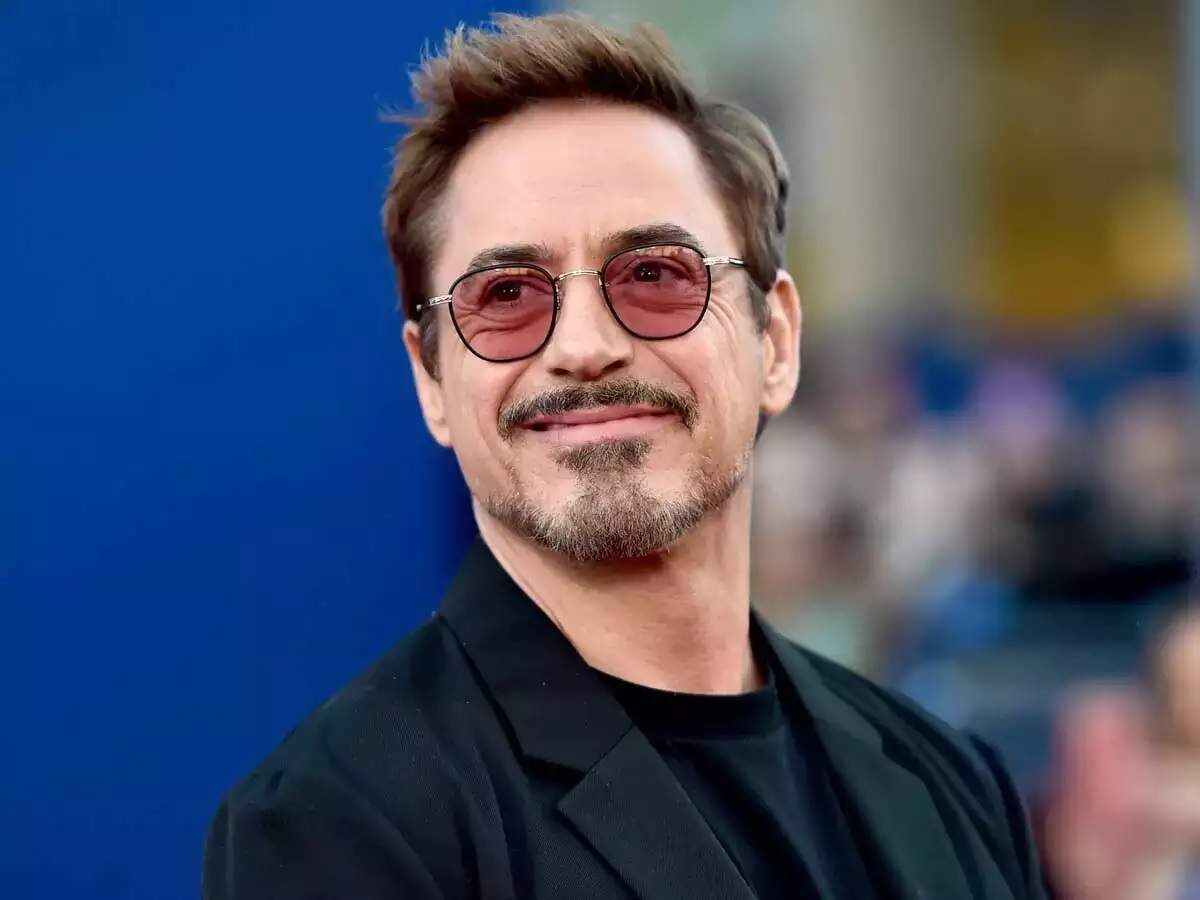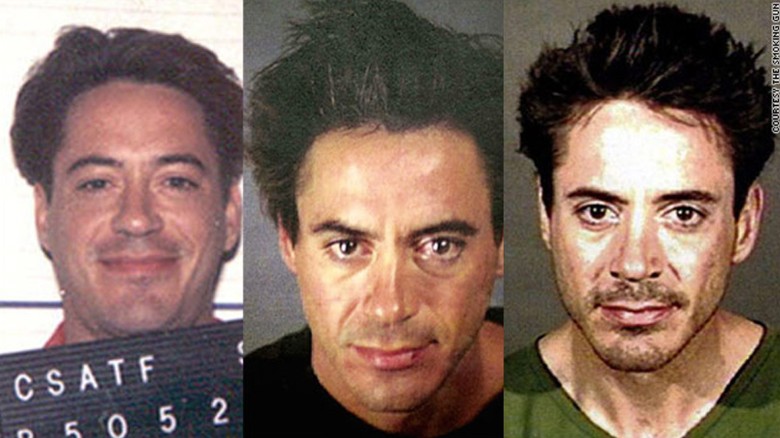The actor says he used drugs before he was a teenager and spent most of his early career under their influence. He had several high-profile arrests in the late 1990s and early 2000s while misusing alcohol, cocaine, and heroin and spent time in a California prison and a state-run rehab facility. In 2002, he announced that he was recovered. Marvel’s 2008 movie Iron Man revived his stalled career.
Who is Robert Downey Jr?
According Wikipedia Robert John Downey Jr. (born April 4, 1965) is an American actor and producer. His career has been characterized by critical and popular success in his youth, followed by a period of substance abuse and legal troubles, before a resurgence of commercial success in middle age. In 2008, Downey was named by Time magazine among the 100 most influential people in the world, and from 2013 to 2015, he was listed by Forbes as Hollywood’s highest-paid actor. His films have grossed over $14.4 billion worldwide, making Downey the sixth-highest-grossing box office star of all-time.
At the age of five, he made his acting debut in Robert Downey Sr.’s film Pound in 1970. He subsequently worked with the Brat Pack in the teen films Weird Science (1985) and Less Than Zero (1987). In 1992, Downey portrayed the title character in the biopic Chaplin, for which he was nominated for the Academy Award for Best Actor and won a BAFTA Award. Following a stint at the Corcoran Substance Abuse Treatment Facility on drug charges, he joined the TV series Ally McBeal, for which he won a Golden Globe Award; however in the wake of two drug charges, one in late 2000 and one in early 2001, he was fired and his character terminated. He stayed in a court-ordered drug treatment program shortly after and has maintained his sobriety since 2003.
Initially, bond completion companies would not insure Downey, until Mel Gibson paid the insurance bond for the 2003 film The Singing Detective. He subsequently went on to star in the black comedy Kiss Kiss Bang Bang (2005), the thriller Zodiac (2007), and the action comedy Tropic Thunder (2008); for the latter he was nominated for an Academy Award for Best Supporting Actor. Downey gained global recognition for starring as Tony Stark / Iron Man in ten films within the Marvel Cinematic Universe, beginning with Iron Man (2008). He has also played the title character in Guy Ritchie’s Sherlock Holmes (2009), which earned him his second Golden Globe, and its sequel, Sherlock Holmes: A Game of Shadows (2011).
Early in his career, Downey played Julian Wells, a drug-addicted rich boy whose life rapidly spirals out of his control, in the film version of the Bret Easton Ellis novel Less Than Zero. His performance, described by Janet Maslin in The New York Times as “desperately moving”, was widely praised, though Downey has said that for him “the role was like the ghost of Christmas Future” since his drug habit resulted in his becoming an “exaggeration of the character” in real life. Zero drove Downey into films with bigger budgets and names, such as Chances Are (1989) with Cybill Shepherd and Ryan O’Neal, Air America (1990) with Mel Gibson, and Soapdish (1991) with Sally Field, Kevin Kline, and Whoopi Goldberg.
In 1992, he starred as Charlie Chaplin in Chaplin, a role for which he prepared extensively, learning how to play the violin as well as tennis left-handed. He had a personal coach in order to help him imitate Chaplin’s posture, and a way of carrying himself. The role garnered Downey an Academy Award nomination for Best Actor at the Academy Awards 65th ceremony, losing to Al Pacino in Scent of a Woman.
Drug Troubles
From 1996 through 2001, Downey was arrested numerous times on charges related to drugs including cocaine, heroin, and marijuana and went through drug treatment programs unsuccessfully, explaining in 1999 to a judge: “It’s like I have a shotgun in my mouth, and I’ve got my finger on the trigger, and I like the taste of the gun metal.” He explained his relapses by claiming to have been addicted to drugs since the age of eight, due to the fact that his father, also an addict previously, had been giving them to him.
In April 1996, Downey was arrested for possession of heroin, cocaine, and an unloaded .357 Magnum handgun while he was speeding down Sunset Boulevard. A month later, while on parole, he trespassed into a neighbor’s home while under the influence of a controlled substance, and fell asleep in one of the beds. He received three years of probation and was ordered to undergo compulsory drug testing. In 1997, he missed one of the court-ordered drug tests, and had to spend six months in the Los Angeles County jail.
After Downey missed another required drug test in 1999, he was arrested once more. Despite Downey’s lawyer, Robert Shapiro, assembling the same team of lawyers that successfully defended O.J. Simpson during his criminal trial for murder, Downey was sentenced to a three-year prison term at the California Substance Abuse Treatment Facility and State Prison in Corcoran, California. At the time of the 1999 arrest, all of Downey’s film projects had wrapped and were close to release. He had also been hired to provide the voice of the devil on the NBC animated television series God, the Devil and Bob, but was fired when he failed to show up for rehearsals.
After spending nearly a year in the California Substance Abuse Treatment Facility and State Prison, Downey, on condition of posting a $5,000 bail, was unexpectedly freed when a judge ruled that his collective time in incarceration facilities (spawned from the initial 1996 arrests) had qualified him for early release. A week after his 2000 release, Downey joined the cast of the hit television series Ally McBeal, playing the new love interest of Calista Flockhart’s title charac His performance was praised and the following year he was nominated for an Emmy Award in the Outstanding Supporting Actor in a Comedy Series category and won a Golden Globe for Best Supporting Actor in a mini-series or television film. He also appeared as a writer and singer on Vonda Shepard’s Ally McBeal: For Once in My Life album, and he sang with Sting a duet of “Every Breath You Take” in an episode of the series. Despite the apparent success, Downey claimed that his performance on the series was overrated and said, “It was my lowest point in terms of addictions. At that stage, I didn’t give a fuck whether I ever acted again.” In January 2001, Downey was scheduled to play the role of Hamlet in a Los Angeles stage production directed by Mel Gibson.
Before the end of his first season on Ally McBeal, over the Thanksgiving 2000 holiday, Downey was arrested when his room at Merv Griffin’s Hotel and Givenchy Spa in Palm Springs, California was searched by the police, who were responding to an anonymous 911 call. Downey was under the influence of a controlled substance and in possession of cocaine and Valium. Despite the fact that, if convicted, he would have faced a prison sentence of up to four years and eight months, he signed on to appear in at least eight more Ally McBeal episodes.
In April 2001, while he was on parole, a Los Angeles police officer found him wandering barefooted in Culver City. He was arrested for suspicion of being under the influence of drugs, but was released a few hours later, even though tests showed he had cocaine in his system. After this last arrest, producer David E. Kelley and other Ally McBeal executives ordered last-minute rewrites and reshoots and fired Downey from the show, despite the fact that Downey’s character had resuscitated Ally McBeal’s ratings. The Culver City arrest also cost him a role in the high-profile film America’s Sweethearts, and the subsequent incarceration prompted Mel Gibson to shut down his planned stage production of Hamlet as well. In July 2001, Downey pleaded no contest to the Palm Springs charges, avoiding jail time. Instead, he was sent into drug rehabilitation and received three years of probation, benefiting from California Proposition 36, which had been passed the year before with the aim of helping nonviolent drug offenders overcome their addictions instead of sending them to jail.
The book Conversations with Woody Allen reports that director Woody Allen wanted to cast Downey and Winona Ryder in his film Melinda and Melinda in 2005, but was unable to do so, because he could not get insurance on them, stating, “We couldn’t get bonded. The completion bonding companies would not bond the picture unless we could insure them. We were heartbroken because I had worked with Winona before [on Celebrity] and thought she was perfect for this and wanted to work with her again. And I had always wanted to work with Bob Downey and always thought he was a huge talent.”
In a December 18, 2000 article for People magazine entitled “Bad to Worse”, Downey’s stepmother Rosemary told author Alex Tresnlowski, that Downey had been diagnosed with bipolar disorder “a few years ago” and added that his bipolar disorder was “the reason he has a hard time staying sober. What hasn’t been tried is medication and intensive psychotherapy”. In the same article, Dr. Manijeh Nikakhtar, a Los Angeles psychiatrist and co-author of Addiction or Self-Medication: The Truth, claimed she received a letter from Downey in 1999, during his time at Corcoran II, asking for advice on his condition. She discovered that “no one had done a complete [psychiatric] evaluation [on him] … I asked him flat out if he thought he was bipolar, and he said, ‘Oh yeah. There are times I spend a lot of money and I’m hyperactive, and there are other times I’m down.'” In an article for the March 2007 issue of Esquire, Downey stated that he wanted to address “this whole thing about the bipolar” after receiving a phone call from “the Bipolar Association” asking him about being bipolar. When Downey denied he had ever said he was bipolar, the caller quoted the People article, to which Downey replied, “‘No! Dr. Malibusian said [I said I was bipolar] … ‘, and they go, ‘Well, it’s been written, so we’re going to quote it.'” Downey flatly denied being “depressed or manic” and that previous attempts to diagnose him with any kind of psychiatric or mood disorder have always been skewed because “the guy I was seeing didn’t know I was smokin’ crack in his bathroom. You can’t make a diagnosis until somebody’s sober.”
After five years of substance abuse, arrests, rehab, and relapse, Downey was ready to work toward a full recovery from drugs and return to his career. In discussing his failed attempts to control his addictive behavior in the past, Downey told Oprah Winfrey in November 2004 that “when someone says, ‘I really wonder if maybe I should go to rehab?’ Well, uh, you’re a wreck, you just lost your job, and your wife left you. Uh, you might want to give it a shot.” He added that after his last arrest in April 2001, when he knew he would likely be facing another stint in prison or another form of incarceration such as court-ordered rehab, “I said, ‘You know what? I don’t think I can continue doing this.’ And I reached out for help, and I ran with it. You can reach out for help in kind of a half-assed way and you’ll get it and you won’t take advantage of it. It’s not that difficult to overcome these seemingly ghastly problems … what’s hard is to decide to do it.”
Downey got his first post-rehabilitation acting job in August 2001, lip-syncing in the video for Elton John’s single “I Want Love” Video director Sam Taylor-Wood shot 16 takes of the video and used the last one because, according to John, Downey looked completely relaxed and “The way he underplays it is fantastic”.
Downey was able to return to the big screen after Mel Gibson, who had been a close friend to Downey since both had co-starred in Air America, paid Downey’s insurance bond for the 2003 film The Singing Detective (directed by his Back to School co-star Keith Gordon). Gibson’s gamble paved the way for Downey’s comeback and Downey returned to mainstream films in the mid-2000s with Gothika, for which producer Joel Silver withheld 40% of his salary until after production wrapped as insurance against his addictive behavior. Similar clauses have become standard in his contracts since. Silver, who was getting closer to Downey as he dated his assistant Susan Levin, also got the actor the leading role in the comedy thriller Kiss Kiss Bang Bang, the directorial debut of screenwriter Shane Black.
After Gothika, Downey was cast in a number of leading and supporting roles, including well-received work in a number of semi-independent films: A Guide to Recognizing Your Saints, Good Night, and Good Luck, Richard Linklater’s dystopian, rotoscoped A Scanner Darkly (in which Downey plays the role of a drug addict), and Steven Shainberg’s fictional biographical film of Diane Arbus, Fur, where Downey’s character represented the two biggest influences on Arbus’s professional life, Lisette Model and Marvin Israel. Downey also received great notice for his roles in more mainstream fare such as Kiss Kiss Bang Bang and Disney’s poorly received The Shaggy Dog. ALSO SEE: Zac Efron’s Drug Addiction Journey









